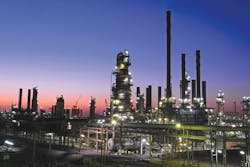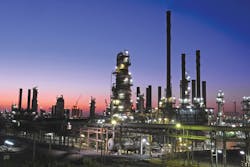Everything comes full circle
Robert Brelsford
Downstream Technology Editor
It's surprising the things one will stumble across in the archives of Oil & Gas Journal. After all, the issues bound inside the hardback volumes lining these shelves document more than 100 years of petroleum business history. While the stories preserved upon these pages naturally document the gilded age of first discoveries and groundbreaking technological innovations, they more importantly chronicle the fledging spirit of an industry that was committed to evolving, improving, advancing, even at the cost of abandoning old ways-however well they once worked-to accommodate progress.
Given how long OGJ has been around, it should come as no surprise that our pages tend to see things come full circle. Start to finish, birth to death, and all that's in between and after.
A perfect example of this is former OGJ Refining Editor D.H. Stormont's nearly 20-page article-including full-size facility photo and process flow sheet pullouts-on the opening of the world's first all-hydrogen refinery in Shuaiba, Kuwait (OGJ, Dec. 23, 1968, p. 41).
Commissioned in 1968, the Shuaiba refinery entered service equipped with the latest process technology available at the time at a nameplate processing capacity of 95,000 b/d. While subsequent expansions boosted capacity to 200,000 b/d, Shuaiba-like Kuwait National Petroleum Co.'s (KNPC) other refineries-suffered extensive damage during the Iraqi invasion of Kuwait in 1990. As a result, the refinery-the country's oldest and most heavily damaged by Iraqi soldiers-was shuttered for repairs until October 1993, when operations finally resumed (OGJ Online, Nov. 29, 1993).
Following results from a series of technology and economic studies that began in 2004, however, KNPC, in conjunction with Kuwait's Petroleum Supreme Council and parent company Kuwait Petroleum Co., announced in 2013 that, as a result of unreasonable costs associated with upgrading technology and improving environmental performance at Shuaiba, the refinery would close as part of the company's Clean Fuels program (OGJ Online, Apr. 1, 2013).
KNPC formally halted operation of the Shuaiba refinery on Apr. 1 nearly 50 years to the day of the plant's commissioning.
As any life well-lived, the passage of a piece of petroleum refining history merits commemoration as much as it does bittersweet reflection. While countless news stories from myriad news agencies may document such events, only in the pages of OGJ will you find its living history.
As William Faulkner observed in his novel Requiem for a Nun, the past is neither dead nor even really the past. Everything comes full circle, and OGJ, as it always has, continues to trace its path. Start to finish, beginning to end, all that falls between, and everything that will follow.

